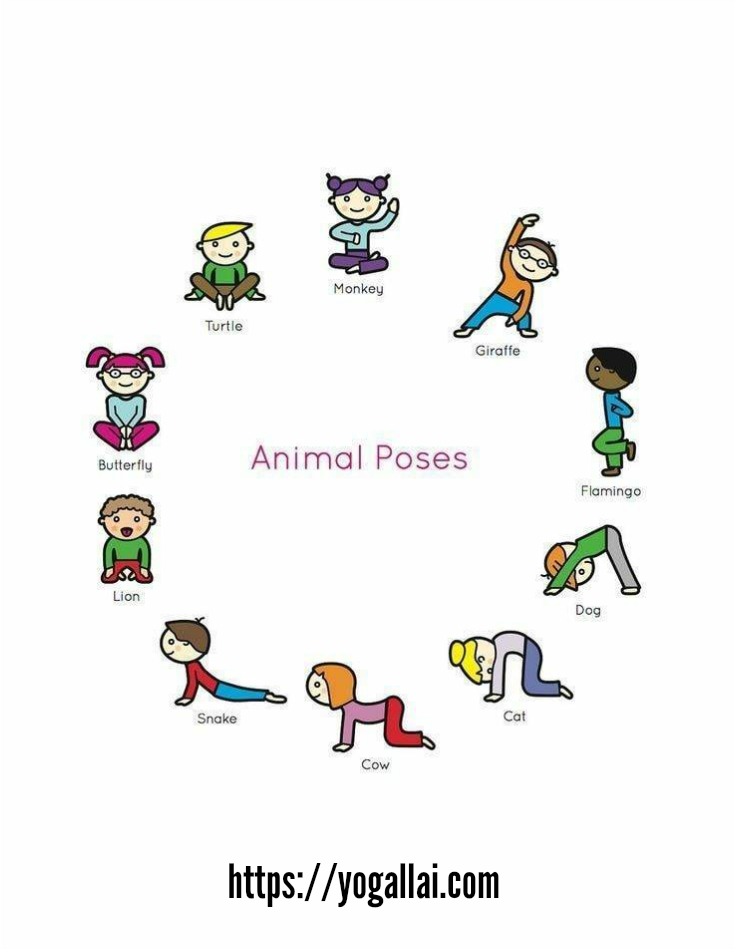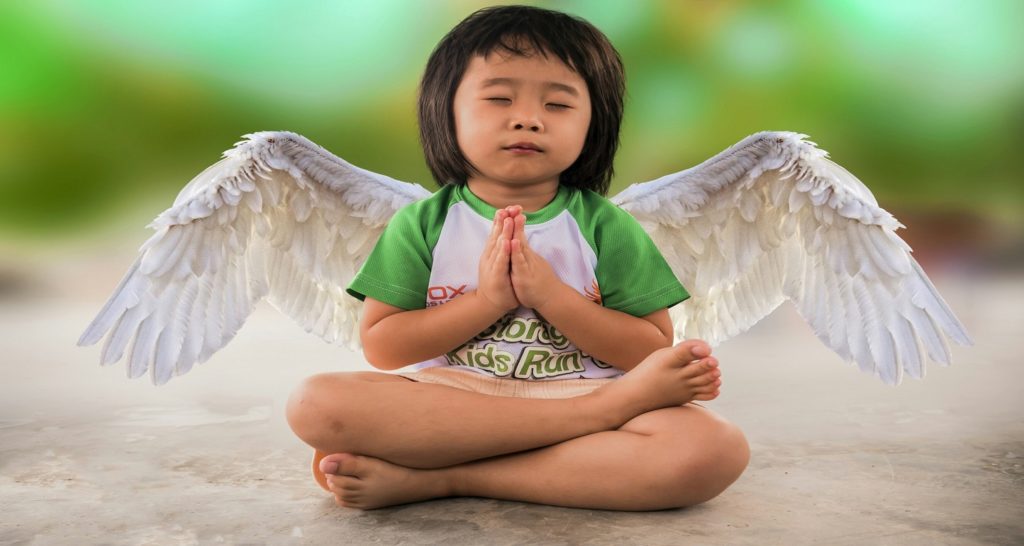
Here I give some yoga poses for kids and also explained the reasons to do yoga and to know more benefits to kids when they practice yoga.
Yoga for children: a fun activity with many benefits!
Yoga for child!

After a day of school, it may be a good time to relax a little and relax the tension to spend a good evening with family!
You probably know that yoga is a great way to evacuate the bodily and mental tensions is the case for adults … but for children too!
What if we made yoga a kind of game? With postures whose evocative names will entertain your children?
According to Christophe Andre, ” Meditation is not an activity more than impose parents too keen to do well to children already overbooked, but a gift they will use all their lives.”
Why ? Because the benefits of meditation and yoga in children are numerous and recognized, but also and above all because a family practice will allow you to share an accomplice activity and further develop the bond of attachmentthat unites you.
Here are some tips for setting up your session at home :
- You can start yoga with your child from the age of 3 by concentrating on fun exercises : imitating animals, becoming aware of breathing with the help of a feather or a balloon. From 6/7 years, you can start to specify the postures even if the imagination can remain an important part of your sessions.
- If your child does not seem very attentive, do not question your ability to transmit, accept that this is just how the session is for today, in the present moment.
- Prepare your session in advance by choosing the postures and exercises that you will propose.
- Accept that some exercises do not please your child, that each session varies and that the effects differ from one session to another.
- Prefer a short session (better 10 minutes every day than two hours a year),
- Feel free to put soft music to immerse yourself in the mood,
- Let go for the session to be a moment of fun sharing … do not take too seriously!
- For each session plan:
– A refocusing time
In practice: Sit comfortably in a sitting position.
Center your breathing for a few moments, then warm your hands by rubbing your palms together to make them warm and place them on top of the skull, eye area, neck and then massage. shoulders, lower back, knees … Concentrate on the sensation of warmth, then when you remove your hands, on the feeling of refreshment. If everyone yawns: it’s won!
– A breathing time.
In practice: Imagine that you are picking a flower and bringing it near your nose. Take a long, gentle breath through the nose and then exhale through your mouth to spread it all around you.
– A time of movements.
In practice: here are some of our favorite postures!
Fans: While standing, feet apart from the width of the pelvis, inhale, lift arms straight in front of you, hold your breath and shake your wrists as if you want to get rid of sticky paper,
Blow and release your arms along the body.
Do this exercise 3 times with the intention of sending away anything that bothers you.
Take time off to observe your bodily sensations.

The cat: On all fours, exhale gradually rounding the pelvis back to the top of the skull (head relaxed between the arms) and then breathe digging the back vertebra vertebra from the top of the skull to the pelvis.
Do 3 to 6 deep breaths in each position.

Dog upside down:
Get on all fours, raise your buttocks to the sky, head relaxed in the arms.
The body forms an inverted V.
Do 3 to 6 deep abdominal breaths in this posture.
Do not hesitate to bend your knees if it allows you to extend your back.

– A relaxation time.
In practice:
Sit on your back, legs raised against the wall.
The back is perfectly straight and relaxed, the head in the axis of the column and the chin slightly tucked in.
Spread the arms of the bust of about ten centimeters, palms of hands turned to the sky to relax the shoulders.
Observe the abdominal breathing to set up spontaneously in this posture.
The belly swells and deflates to the rhythm of the breath.
Let calm settle and listen to your tingling, tingling or heat sensations in the feet, legs, chest, throat, lower face.
To get out of this posture: bring your knees on the belly and embrace them, rock from right to left to massage the back on the carpet and let fall on one side, in fetal position, knees well up.
Breathe there for a moment before coming to straighten up by the side to protect your back.

- Always have a moment of meditation just for yourself before starting a session with your child.
In practice:
Sit back and observe a moment when your breathing settles.
Feel the belly that rises to the breath and drops to the exhalation or the fresh air that enters your nostrils to the inspiration and that comes out warmed by its passage in the lungs at the expiration.
Do this exercise for at least a minute while trying to relax your body tension a little more each time it expires.
If thoughts come to you, let them pass like clouds in the sky and always come back to the observation of your breath.
- And most importantly, keep in mind that yoga that hurts is a poorly done yoga:never go beyond the possibilities of your body and invite your child to take care of him and not to force.
- Take time between each movement to watch your body react, focus your attention on bodily sensations : tingling, tingling, feeling of heaviness or lightness.
- To end your session, you can according to the age and the envy of your child:
– Talk about your feelings ,
– Make a drawing that symbolizes your session,
– Exchange and write a notebook : the favorite postures, the least appreciated, difficulties encountered…
– Draw and / or color a mandala ,
– Sing a sweet song ,
– Suggest to your child some massage movements …


